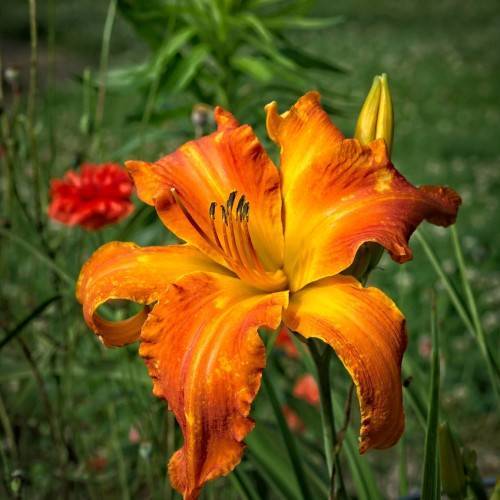
daylily
Hemerocallis 'Mauna Loa'
Cycle:
Herbaceous Perennial
Watering:
Average
Hardiness Zone:
3 - 9
Flowers:
Flowers
Sun:
Full sun,part shade
Leaf:
Yes
Growth Rate:
High
Maintenance:
Low
Drought Tolerant:
Yes
Salt Tolerant:
Yes
Care Level:
Medium
watering
Daylilies (Hemerocallis 'Mauna Loa') prefer consistent moisture and need to be watered regularly in order to thrive. Water them deeply once or twice a week during the growing season, and keep the soil slightly moist at other times. During the winter, water them only enough to prevent the soil from completely drying out, but never allow it to become soggy. Aim to give the daylilies 1 inch of water per week, and adjust the frequency and amount of watering according to the temperature and rainfall in your area.
sunlight
Daylilies, like many flowering plants, need full sun to bloom and do best in around 6-8 hours of direct sunlight per day. If your Daylily (Hemerocallis 'Mauna Loa') is planted in an area that doesn't get enough sunlight, it won't flower as much. The more sunlight it receives, the fuller your plant's bloom will be. Daylilies prefer having their morning sun, but they can also tolerate hotter afternoon sun if necessary. When possible, you should provide your Daylily with morning sunlight and then shade it in the afternoon.
pruning
Prune daylily (Hemerocallis 'Mauna Loa') in late spring to early summer. Cut the flower stems to the ground after flowering completes and remove any dead foliage. Trim any overcrowded stalks and weak growth. Prune lightly to maintain the natural form of the plant, if desired. Once fully grown, pruning can be done once a year. Do not prune more than one third of the foliage in any given pruning session.
